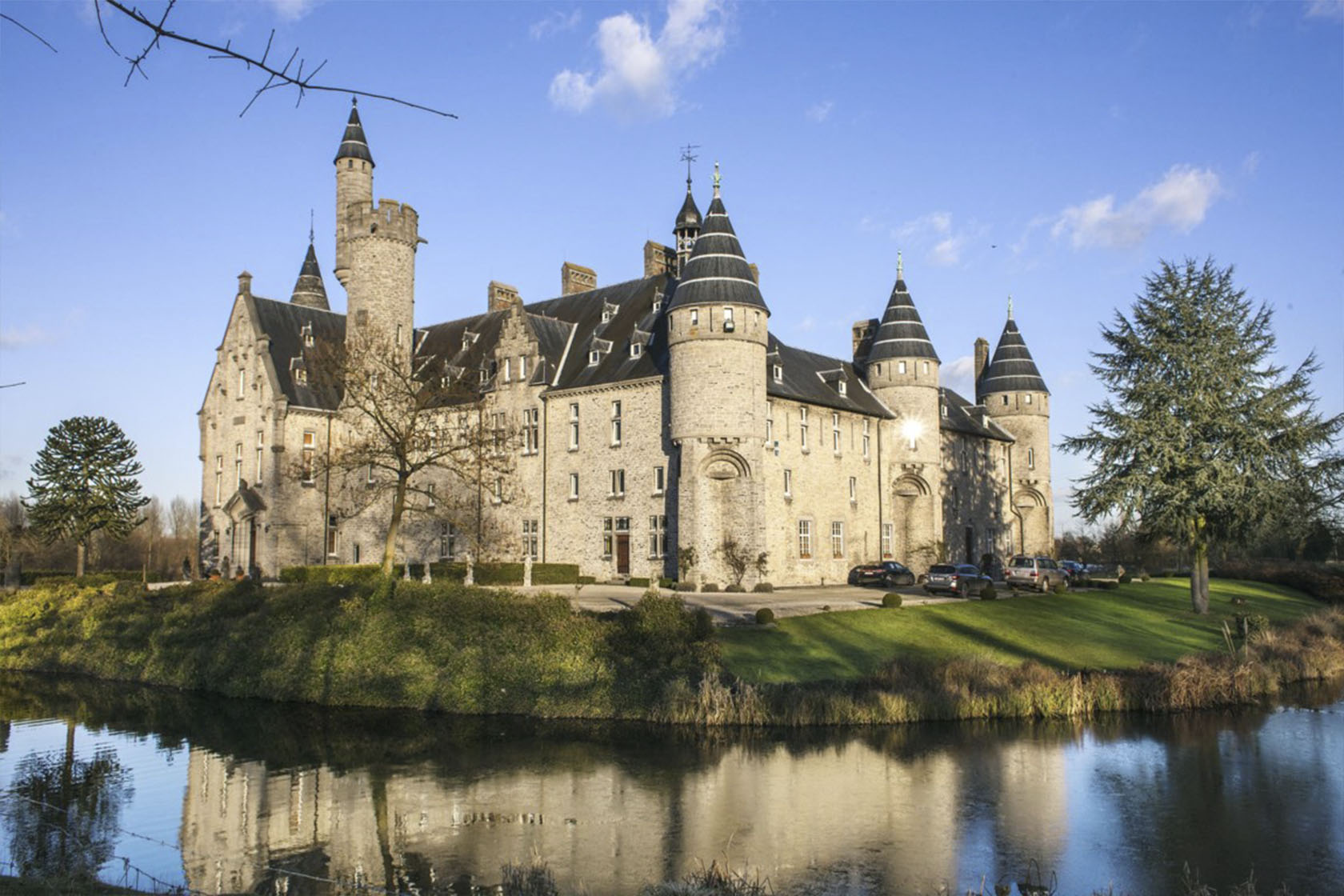
At the end of the 19th century, the fortified Renaissance castle built by the Spanish nobleman don Pedro Coloma underwent a thorough renovation commissioned by Count Ferdinand Joseph. All that remained of the former fortified castle were a number of wall sections and tower bases. Architect Hendrik Beyaert transformed it into a large moated castle, equivalent to the castles of the Loire in France.
Its location along the Old Scheldt provided the architect with a tool to imagine this monument as floating on a mirrored water surface. It became an ornate neo-Gothic castle with a peaceful and residential character. In 1979 the castle with its dependencies was classified as a historical monument still inhabited by Count John de Marnix de Sainte Aldegonde.
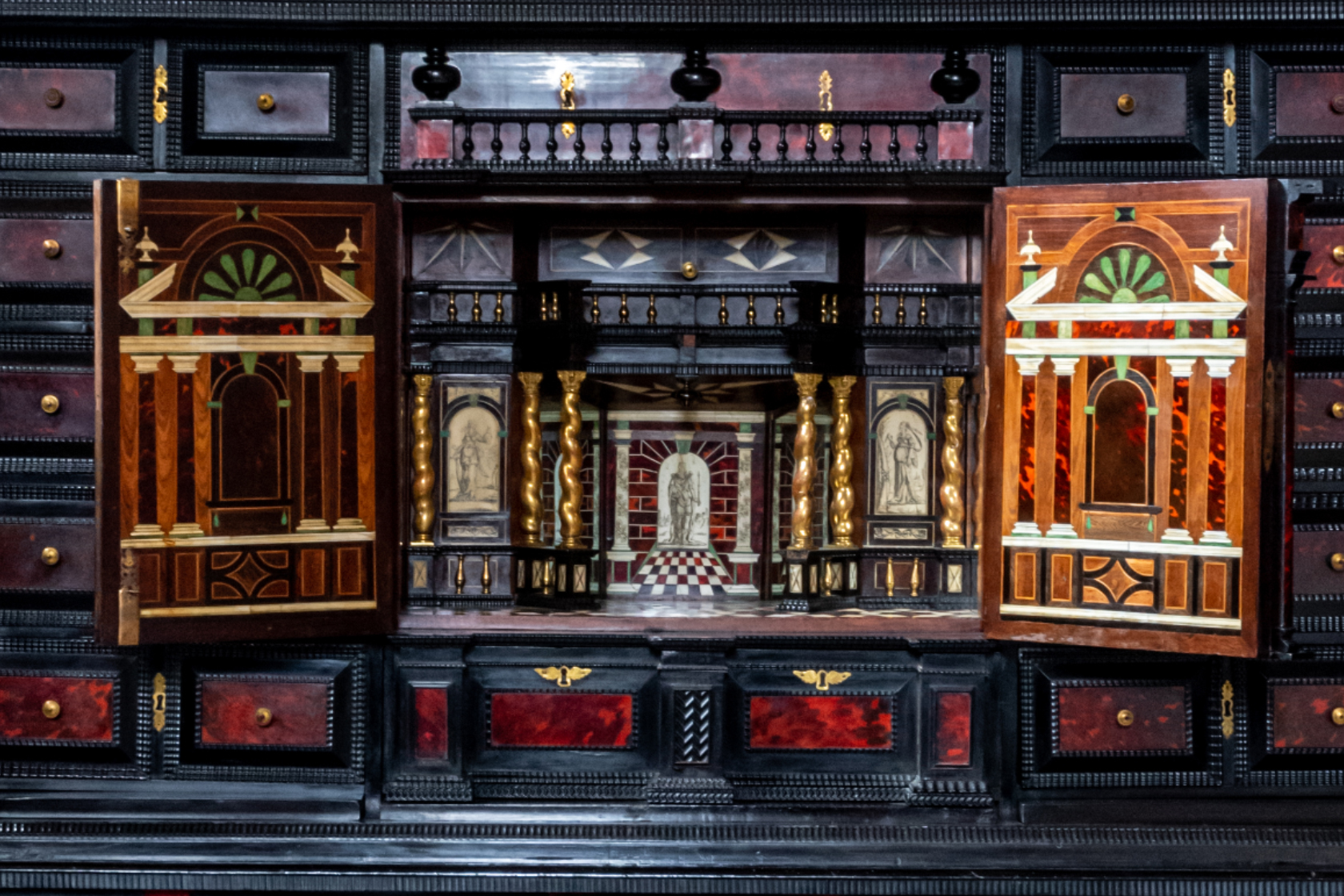
The entire castle is elegantly decorated in Louis XV and Louis XVI styles with Italian accents. In the vestibule flaunts a Flemish cabinet from the 17th century. It is the various, generously used precious materials such as tortoise shell, ivory and ebony that give the cabinet its luxurious character.
In the numerous rooms, in addition to the antique furniture, you can enjoy beautiful chandeliers, porcelain, paintings and other exceptional decorations from previous centuries.
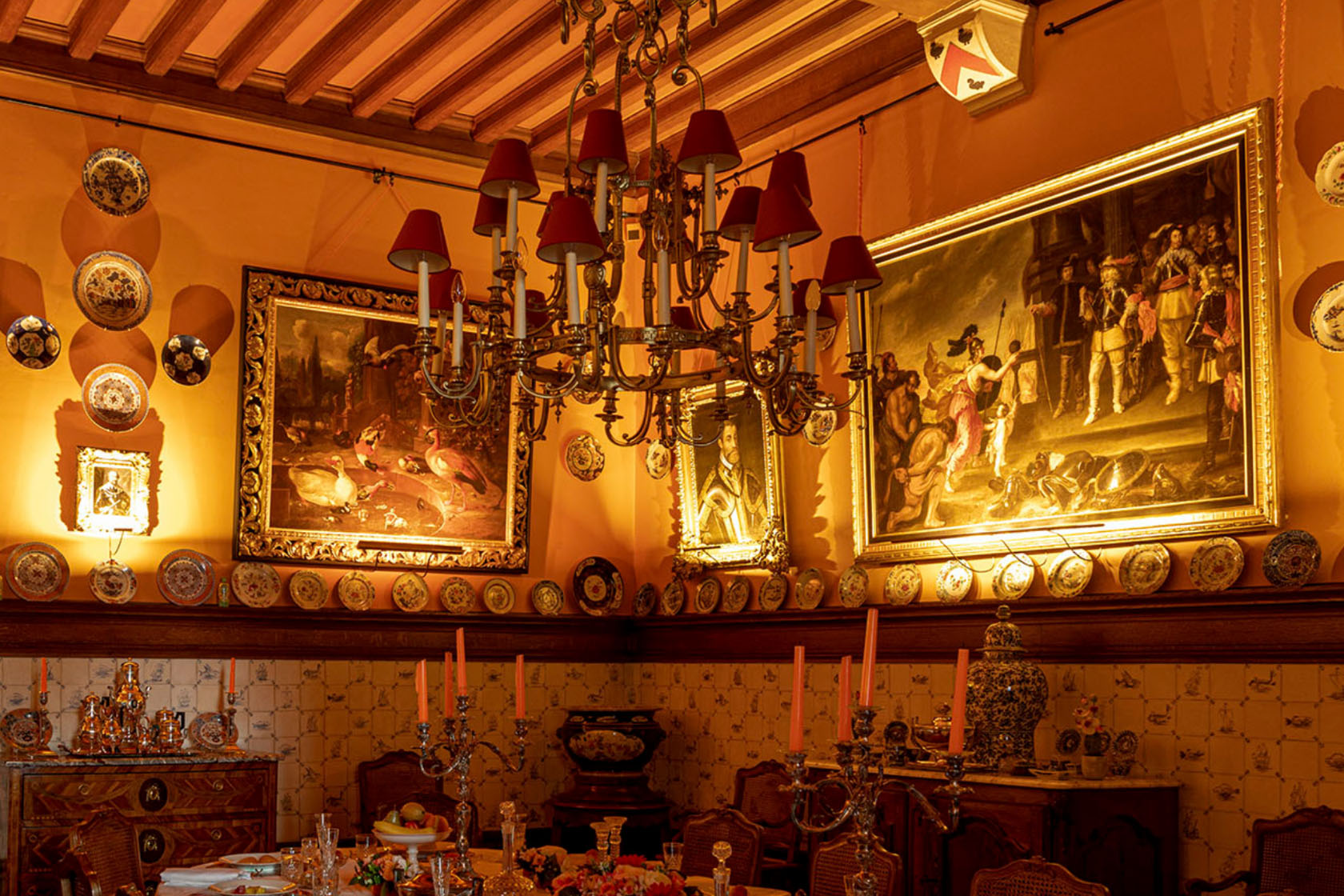
On the ground floor, one can admire the beautiful dining room, with attached the authentic pantry. The dining room is decorated with beautiful paintings of the rulers of the 16th century and numerous decorations.
Slide into a table and you'll imagine yourself in the middle of a gala dinner...

According to the etiquette of the 19th century, the chateau has a separate salon for the ladies and gentlemen.
The ceiling paintings by Thierry Thenaers are a real eye-catcher.
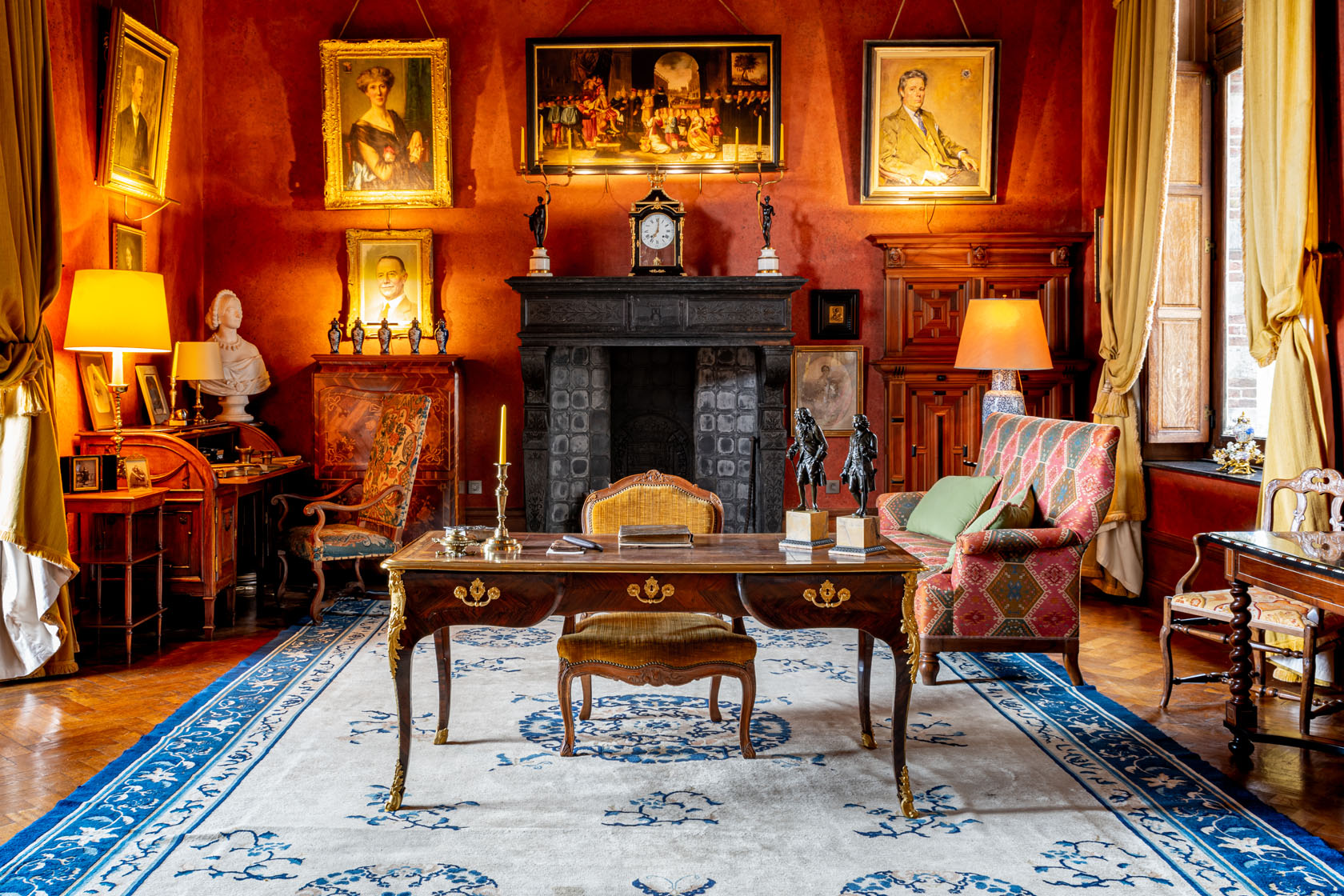
The recently renovated smoking room, like all the other living rooms, is richly decorated with historic paintings and beautiful antique furniture.

At the castle there is a red and beige library, among the oldest books are incunabula (crib print) and manuscripts from the Middle Ages.
This historical collection has a size of more than 2,000 old books that have been carefully inventoried.
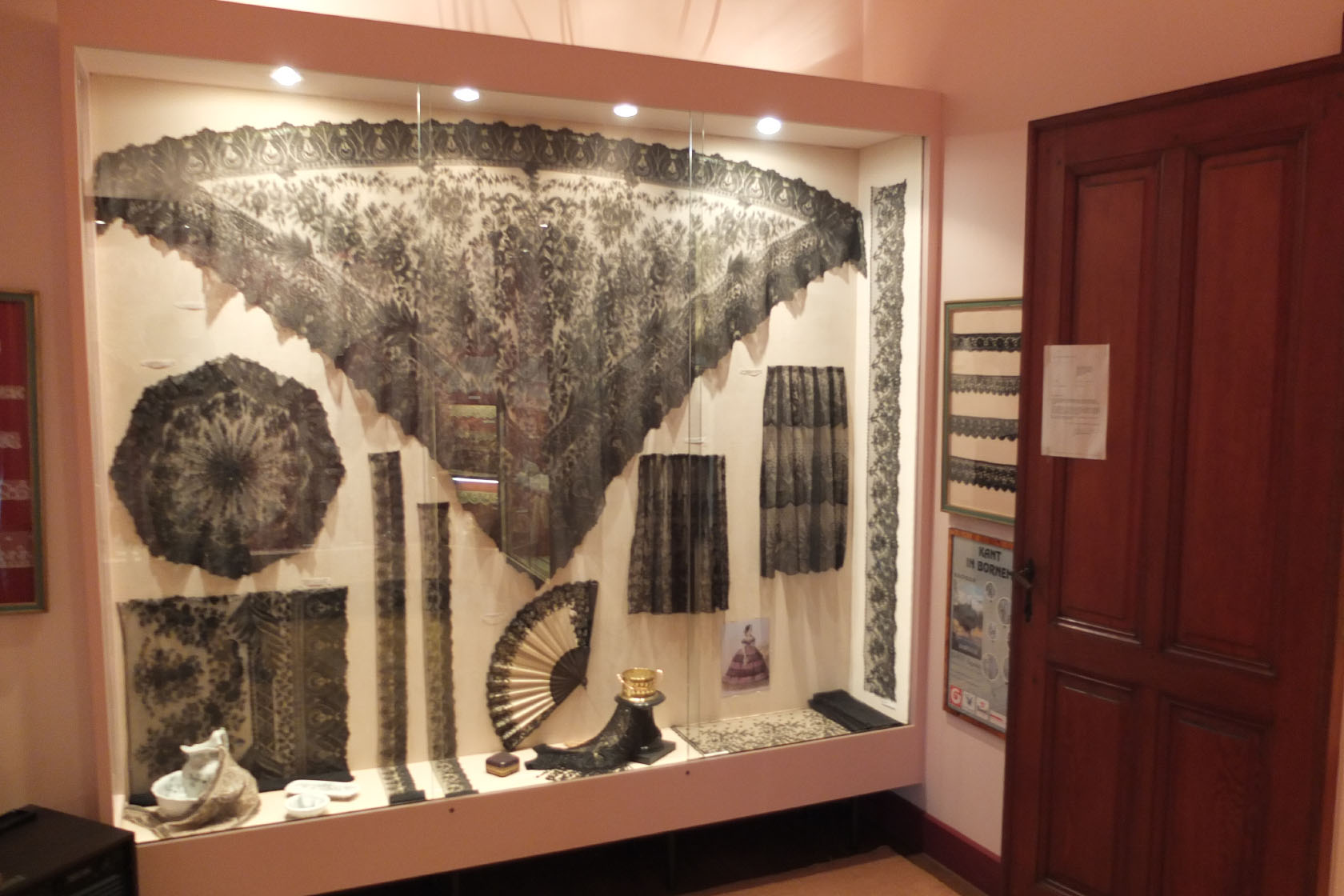
On the first floor is a beautiful lace room with a collection of all kinds of lace including rare pieces of white and black lace from Alençon, Bruges, Brussels, Chantilly, Lille and Valenciennes that have given the Marnix family allure for centuries.
The christening dress and the black, gossamer scarf each tell their story.
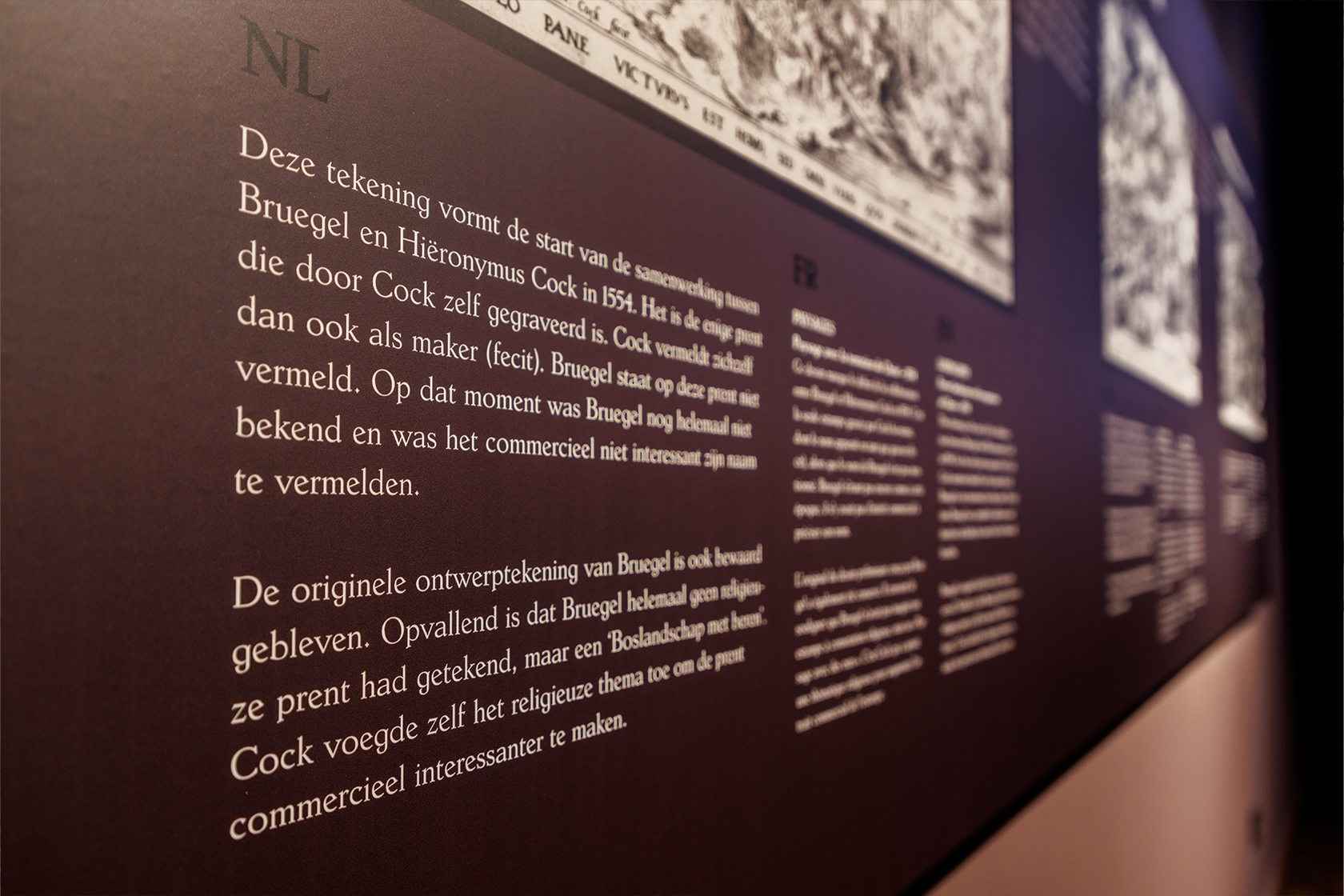
The arrangement of the whole shows the passion of the owner to welcome visitors in an exceptional setting.
Count John owns engravings of all themes drawn by Bruegel. The arrangement of the whole bears witness to the count's passion for receiving visitors in an exceptional setting.
In 2021, a unique and interactive Bruegel room was realized for educational purposes.
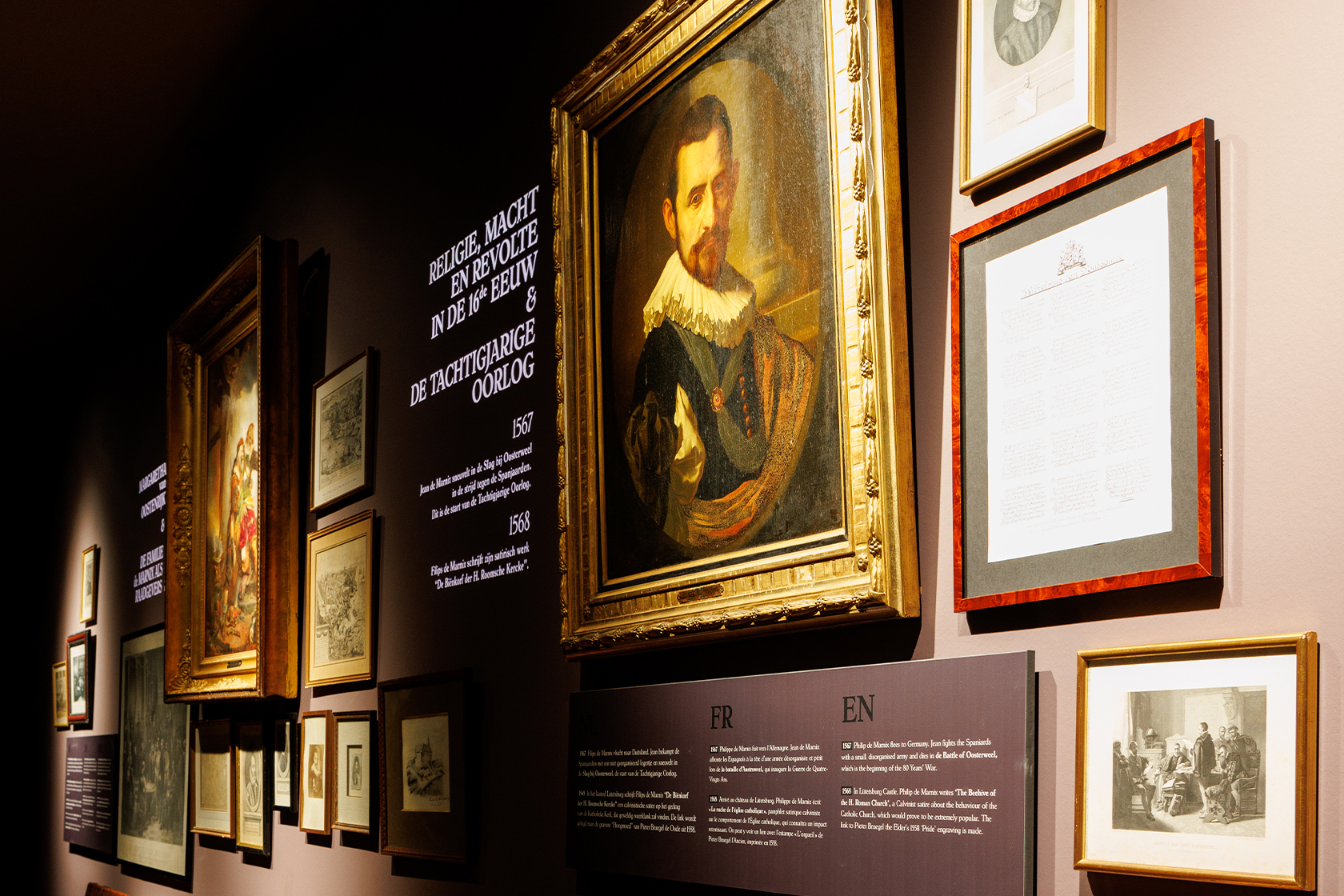
During your visit you will be introduced to a permanent exhibition about Philip de Marnix, right arm of William of Orange, in the revolt against the Spanish monarch Philip II.
The completely refurbished museum space illustrates the important role Philip de Marnix played in the turbulent 16th century as the outer mayor of Antwerp, defender of his city against Alexander Farnese, cryptographer, translator of the Bible and author of the Wilhelmus and the Biënkorf.